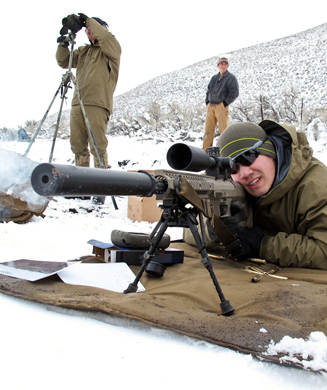We may earn revenue from the products available on this page and participate in affiliate programs. Learn More ›

I had just fired my first round on day one of sniper school when the instructor came over to me. "Son, you need to start breathing or you're going to pass out," he said. It was the easiest task we would have to do all week: shoot five rounds into a 100-yard target from the prone position. I was already overexcited and shaky. I had been training and waiting for this trip for weeks and now that I was finally behind the rifle, anticipation took over. Was it possible to give yourself buck fever while shooting at a paper target? I guess I would find out. Photos by: Sean Utley, Derek McDonald and Alex Robinson




















1) Find the target with patience and a good spotting scope

















For four days I did nothing but shoot, spot, hike and reload at a sniper school in the mountains of Utah. Here’s what I learned.
